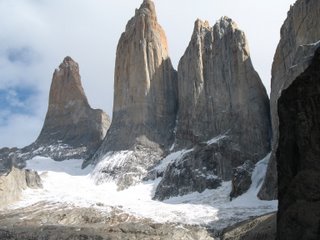Introducing Indonesia
Indonesia is a vast archipelago of over 11,000 islands that stretches out towards Australasia. Its the worlds fourth most populous country and after India can claim to be the worlds second biggest democracy, based on voter turnout. However there have only been three elections since the fall of the Suharto dictatorship in 1998 and politically the country is on a steep learning curve. The democrats, a rising force in Indonesian politics won last years elections, despite taking only 20% of the vote. Rivals Golkar and PDIP each took around a 14% share and the remaining votes were split across the countries many different political factions. Since the May 2009 elections, attention has focused on the race for President, where there has been much behind the scenes maneuvering between the main parties in an attempt to form a more powerful political coalition. Current incumbent Susilo Bambang Yudhoyon retained the top job, having made promises to reduce graft a big part of his campaign. Public sector corruption is endemic and my own perceptions suggest that artificial price inflation within the private sector is worse here than most other places in South East Asia.
The archipelago was the jewel in the crown of the Dutch East Indian trading company, later becoming a Dutch colonial possession. Yet over the course of three centuries of colonial rule, the Dutch never really unified the islands. Following independence after world war two, the separatist struggles continued, with perhaps the most bloody conflict being the secession of East Timor. Whilst the countries many ethnic minorities form a rich tapestry of tribal cultures, the challenge for modern Indonesian governments has been to try to foster a national identity, whilst attempting to balance the countries vast population across its many islands. Transmigration policies were encouraged under the Suharto dictatorship, opening up the backwaters of Sumatra and Kalimantan to economic prospectors, whilst aiming to reduce overpopulation on the island of Java. However, this mass migration caused sectarian tensions to simmer in some areas and national unity remained an elusive ambition. In recent decades, independence movements in remote areas such as Aceh and Papua have further plagued attempts at Indonesian unity and whilst a fragile post tsunami truce has been brokered in Aceh, Papua remains a troubled area with much resentment directed towards the Javan elite.
Indonesia was perhaps the worst victim of both the 1998 East Asian economic crisis and the 2004 tsunami. Its islands arc along the join between two tectonic plates with volcanic eruptions, earthquakes and giant landslides all contributing to the difficulty of life in a country where many people remain subsistence farmers. Although Indonesia has not matched the achievements of the BRIC nations, it has been posting some impressive economic growth in places. Unfortunately this has been accompanied by environmental problems, as vast areas of pristine rainforest are cleared for oil palm and fruit plantations. Indonesia is the worlds third biggest CO2 polluter - largely because of deforestation. Alongside significant offshore oil, gas, mineral and metal reserves are the tropical cash crops which are amongst the countries main exports: hardwoods, palm oil, rubber, cloves, tea, coffee, cacao, durian and coconut are all big commodities. Java and Sumatra host a number of large industrial cities and ports that help drive this economy, whilst tourism plays a lesser role. Indeed outside of Bali and Lombok you won’t find too many foreigners and in places, the traveler trail that used to exist has gone distinctly cold. Thus it has remained South East Asia’s final frontier, a destination for those with time on their hands and an appetite for exploration. English isn’t widely spoken and quickly made friendships often falter due to lack of a common language. It helps to learn some Bahasa Indonesia, the national language. Its not a difficult language to get stuck into and a little Bahasa goes a long way. In some places, its easy to end up being the only tourist in town which can bring with it a chorus of welcoming, yet sometimes overwhelming “Hello Misters”.
The country does have a continuing problem with extremist islamic elements. The Bali bombs of 2002 killed 202 people and bomb blasts at two five star Jakarta hotels in July last year, will do little to calm fears or assist those seeking to attract more tourists to these enigmatic islands. I found there were a few places where Indonesian male machismo does rear its ugly head but overall the attitude was welcoming and its in the more remote areas where you get the warmest welcome.
Indonesia’s island territories include Papua (the western half of New Guinea, the worlds second largest island), Kalimantan (the largest of four states that make up the planets third largest island Borneo) and Sumatra (number six on the global islands by size list). Although my two month island hopping adventure bypassed these giants, I still covered a vast distance from the capital Jakarta on the island of Java, traveling east across Bali, Lombok and Sumbawa to Flores and finishing up on the remote island of Sulawesi. The journey across Indonesia was a great opportunity to get up close to some amazing biodiversity, both above and below the water and many of the highlights were experienced in off the beaten track places observing some unusual rainforest animal or tropical fish.


0 Comments:
Post a Comment
<< Home